The true story of Universal Genève, 3rd and final part: Polerouter, Le couturier de la montre, chronometers, etc.
4 February 2024
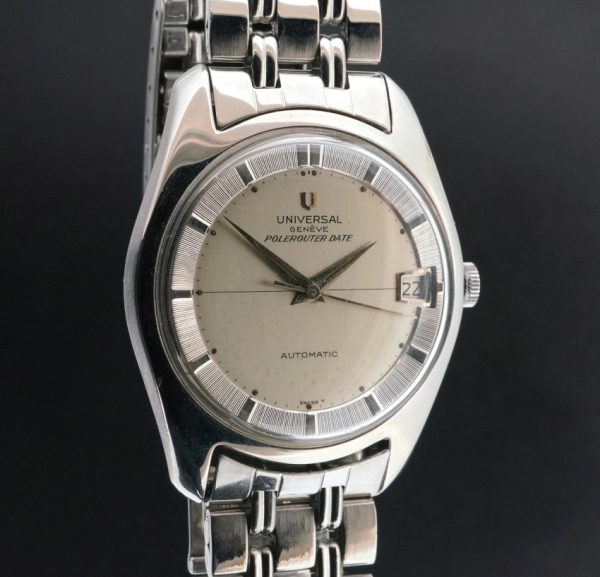
3.Polerouter: an iconic watch
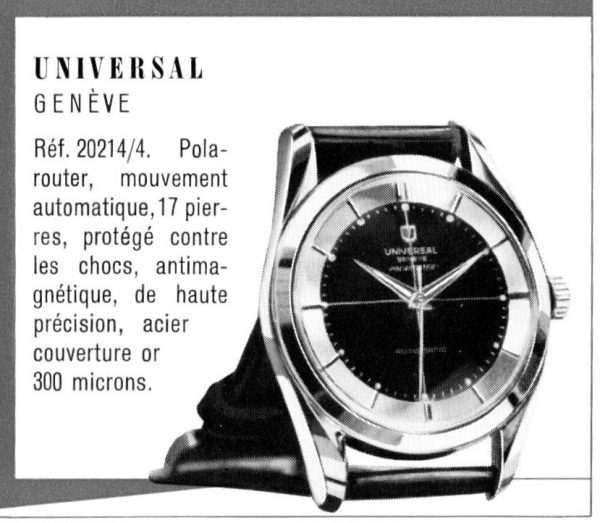
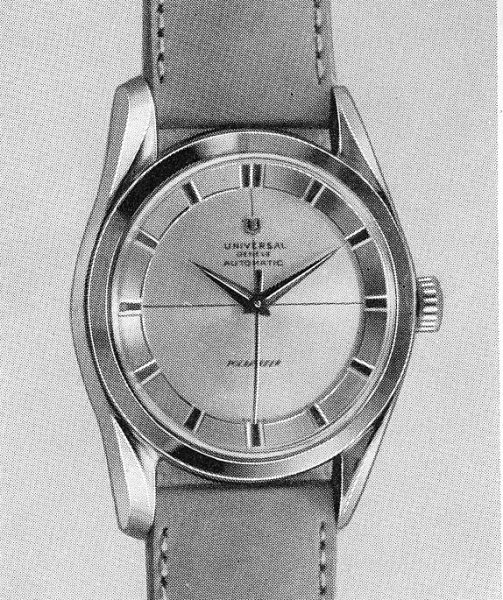
Universal Polarouter presented at Basel 1955
Universal’s Polerouter is without doubt the best-known model from the Geneva-based brand, and the one that has been produced in the greatest number of versions.
The design is by the famous creator Gérald Genta. The distinctive feature of this watch is the three-dimensional appearance of its dial, which is in fact in two parts: a circular ring containing the hour markers is fixed to the periphery of the glass at its lower part and comes into contact with the dial, itself fixed to the movement. This particular arrangement was patented by Universal in September 1953[1]. The three-dimensional appearance is enhanced by the difference in color and material between the ring and the dial.
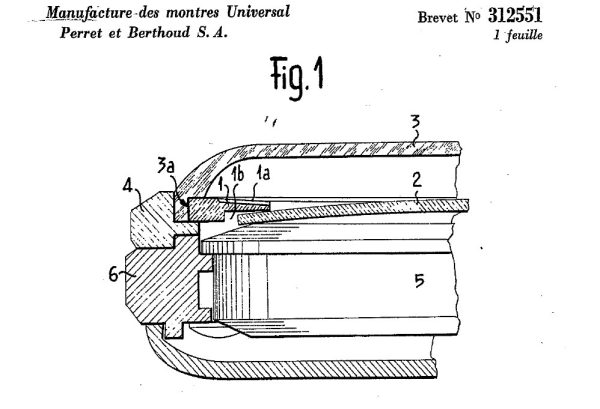
Polerouter dial patent
The watch, originally called Polarouter, was the subject of a particularly innovative launch campaign. It was associated with the first transpolar flight from Copenhagen to Los Angeles, on November 15, 1954, by an SAS (Scandinavian Air System) Douglas DC6B[2]. Passing over the North Pole saved 2,600 kms compared with the transatlantic route. As the aircraft of the time were unable to cover such a distance in a single flight, two stopovers were planned, one in Söndre Strömfjord, Greenland, the other in Winnipeg, Canada.
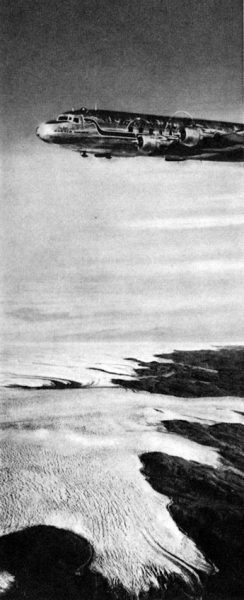
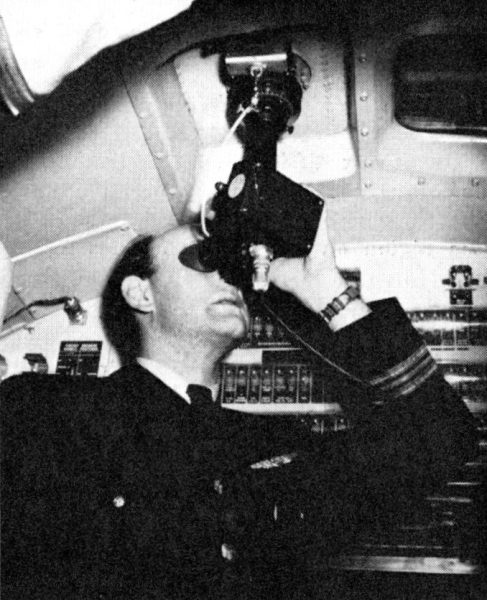
But the major difficulty of this route was the impossibility of using the magnetic compass near the pole. What’s more, radar was reserved for military aviation at the time. So we had to use a gyrocompass, coupled with “old-fashioned” control by measuring the position of the sun or fixed stars. And for these measurements, it was necessary to know the time precisely, hence the need for a good watch. This is how the Polarouter became the official watch of the SAS.
When it was launched in 1955[3], the watch was available in several versions, the best-known being 20217 in steel, 20214 in plated metal, and 10234 in gold. All models were water-resistant. The movement was self-winding, with oscillating weight and center seconds (caliber UG 138).
Around 1957, the watch takes on its definitive name: Polerouter.
In 1958, the Polerouter is equipped with the new “Microtor” automatic micro-rotor caliber (UG 215), the world’s thinnest at just 4.10 mm thick (model reference 20357).
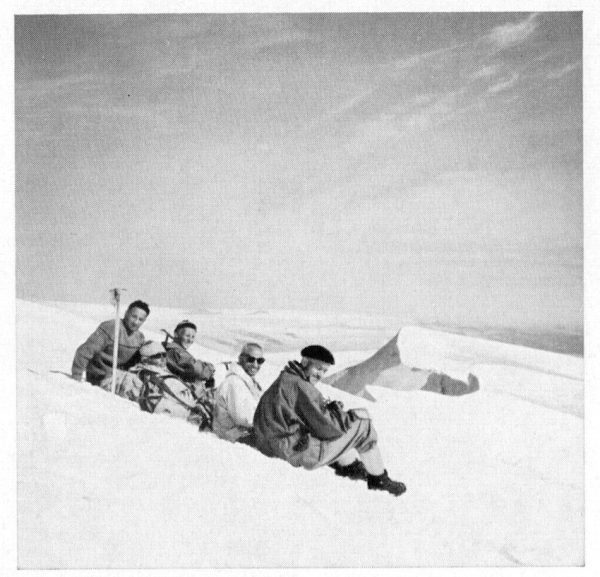
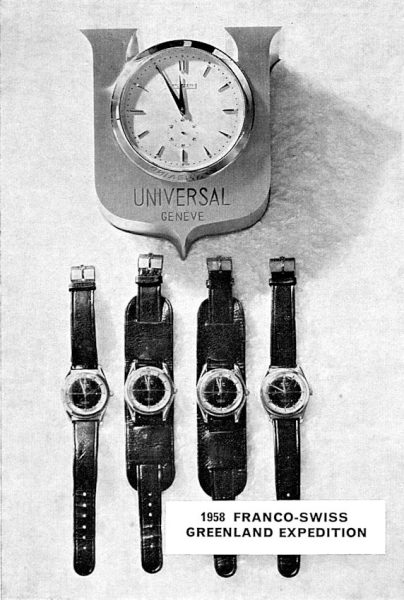
To test their resistance, 4 Polerouter Microtor watches accompanied the members of the Franco-Swiss expedition to Greenland for 2 months in extreme conditions, with the ascent of 10 summits. On their return, the watches hardly deviated from the exact time. [4].
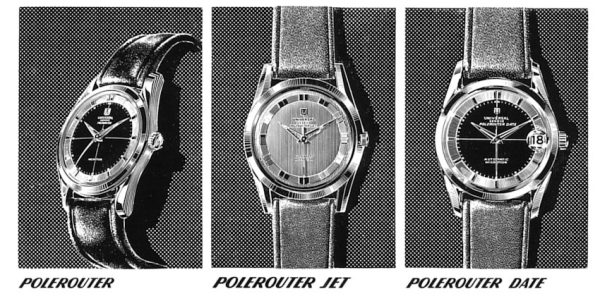
In 1959, launch of the Polerouter date models with date window at 3 o’clock (ref. 204503), and Polerouter Jet (ref. 10364, standard dial).
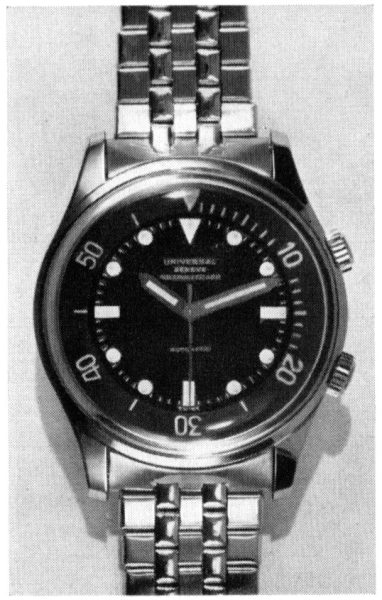
Polerouter Sub, 1961
In 1961, presentation of the Polerouter Genève and Polerouter Genève date models, with single dial, and above all the Polerouter Sub diving model, water-resistant to 200 m and fitted with a Piquerez “supercompressor” case, with rotating bezel under the glass.
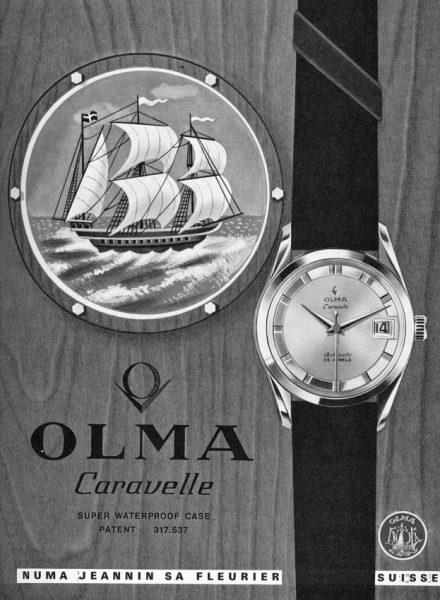
Olma had obtained a license from Universal to produce models similar to the Polerouter.
The considerable success of the Polerouter model naturally led to imitations. In 1960, Universal took legal action to stop the production of copies made by Eldor Watch, and did the same with Schlup & Cie (Rado) in 1961. Licensing agreements were also reached. This was the case in 1962 with Olma, Enicar and Ch. Wilhelm & Cie (Festina), who were then able to produce models close to the Polerouter.[5].
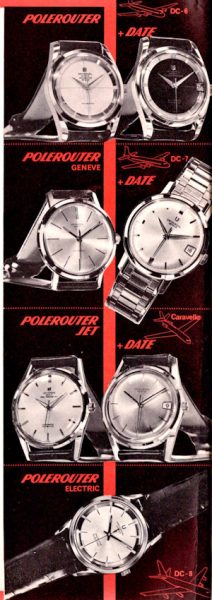
Polerouter models, 1965
In 1964, Universal launched the electric Polerouter, equipped with a Lip R.148 caliber. With the end of its watchmaking status, Universal could eventually have used Ébauches SA’s first electric caliber, the Landeron 4750, available since 1962. But distribution agreements and Universal’s involvement with Lip certainly played into the French company’s hands.
The Polerouter Electric was the last Polerouter of the Perret & Berthoud era. New models were launched in 1987, with no connection to the original models.
4. Le couturier de la montre
Under the influence of Raoul Perret, Universal set up a design department in 1932, using in-house designers as well as numerous external designers, particularly in Paris, where a number of designers, such as Simone Gerli[6], worked for Universal[7]. Also in Paris, Universal collaborated with Lehmann & Righi and Hermès, two of Universal’s agents in France.
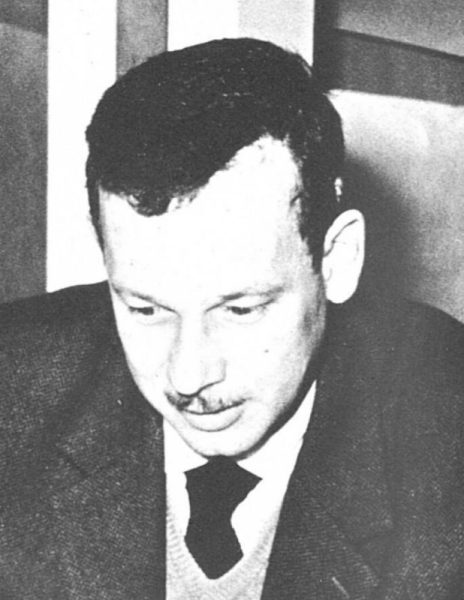
Raoul Haas
Other designers include Gérald Genta and Raoul Haas. Raoul Haas, who trained at the École des Arts Décoratifs in Geneva and worked for other companies such as Patek Philippe[8], became head of the design department at Universal in the late 1950s. It was to him that we owe the creation of exceptional, sometimes unique models, awarded in international competitions.
Raoul Perret, who was vice-president of the Fédération Horlogère and a member of the Basel Fair organizing committee, was also very active in the most important event for stylish watches: “Montres et Bijoux de Genève“. Launched on the initiative of Paul Vogel, director of Solvil, this exhibition became the annual meeting place for luxury watches from 1940 onwards, and Raoul Perret became its president.
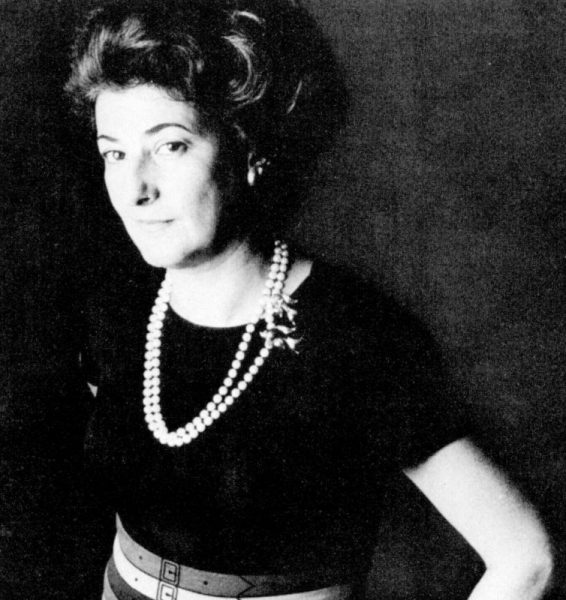
Roberta Di Camerino
The slogan “Le couturier de la montre” was used in Universal advertisements from 1963 onwards, and became a registered trademark in 1969. In 1970, Universal commissioned a collection of ladies’ watches from Italian haute couture specialist Roberta Di Camerino.[9].
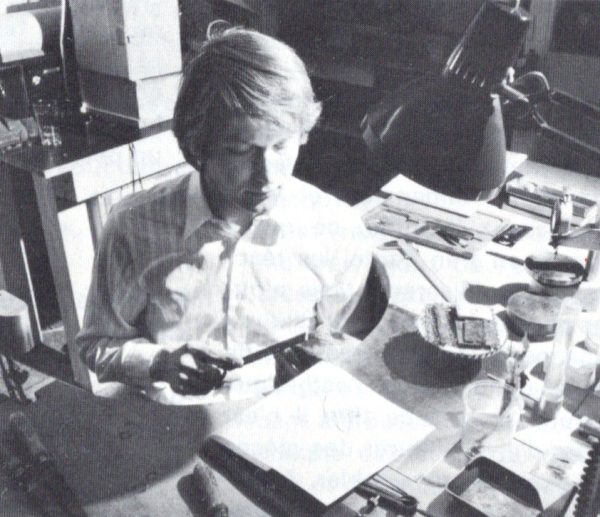
Claude Brunner
The arrival of electronic watches posed a number of challenges for designers, who had to contend with the thickness of the first calibers and the need for easy battery replacement. In 1970, Universal collaborated with Claude Brunner, a young and talented jeweler-stylist from Carouge, for the Prix de la Ville de Genève competition, where he was awarded a mention[10]. The following year, thanks to another Carouge designer, Frank Böttger, Universal received a second mention in this competition.
4.1 Remarkable models
One of the first striking designs was the Talisman model, created in 1933 and regularly reissued. It’s a rectangular watch with a very thin bezel – a novelty at the time – and a minimalist dial where the indexes are represented by simple lines.
Here are a few examples of Universal’s original models:
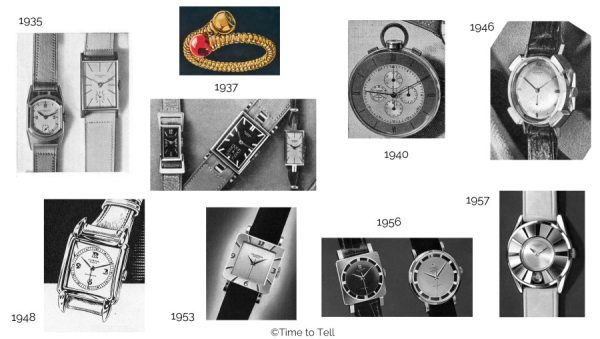
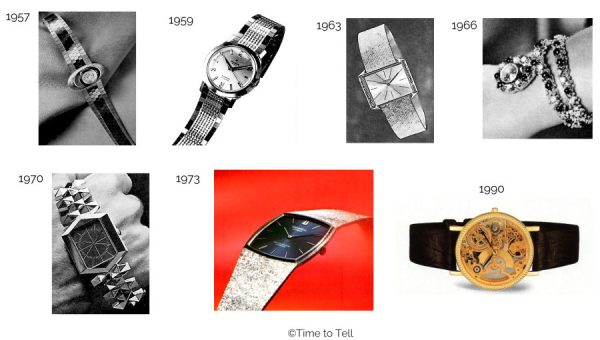
4.2 Prizes and awards
– 1962: City of Geneva Prize for a watch designed by Raoul Haas
– 1964: First prize at the Swiss National Exhibition for an automatic ladies’ watch
– 1965: Mention at the Prix de la ville de Genève, 1st prize at the Académie Internationale du Diamant
– 1968: Prize at the International Diamond Academy
– 1969: Golden Rose at Baden-Baden,
– 1970 and 1972: Mention in the Prix de la ville de Genève
5. Universal and chronometry
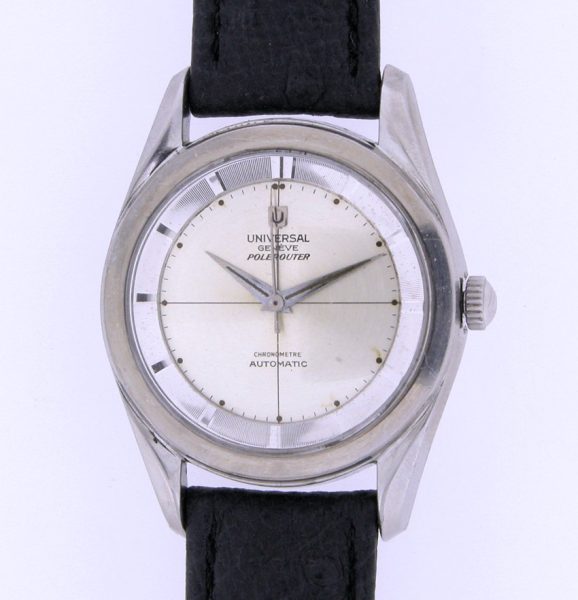
Polerouter chronometer
Coming from Le Locle, the Mecca of chronometry, it seems only natural that Universal should have taken great care to ensure the precision of its watches. As early as 1914, the company submitted a watch to the Bureau officiel de contrôle de la marche des montres de la Ville du Locle, and obtained a 1st class bulletin with mention[11].
But it was above all from the late 1930s onwards that Universal, which could now have its own movements tested, became actively involved in the production of chronometers.
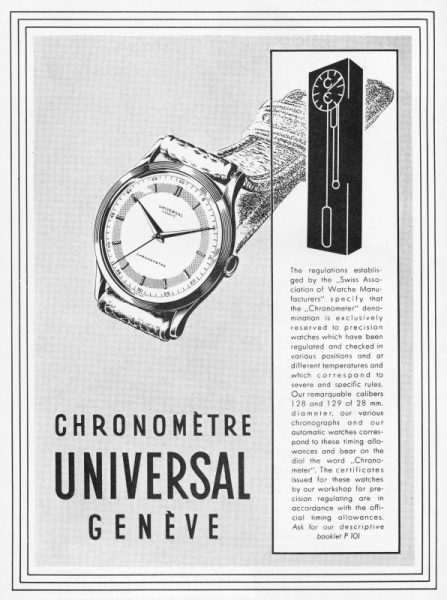
1950
The exact number of chronometers produced by Universal is not known. However, estimates can be made from the results published by the Bureaux de contrôle de la marche des montres in Bienne and Le Locle, where Universal had its watches tested.
The estimates are as follows:
– between 1939 and 1949: around 280 chronometers
– between 1950 and 1959: approx. 230 chronometers (high uncertainty)
– between 1960 and 1967: 3347 chronometers
It seems that after the Bulova takeover, Universal’s deposits with the Inspection Offices fell sharply, or even ceased.
6. Models of disputed origin
During its essentially “Latin” period, i.e. until the mid-1930s, Universal used “exotic” calibers and cases whose origins are difficult to trace today. This encouraged some rather fanciful attributions, unfortunately often repeated from site to site without specifying the sources. This is particularly true of the following models:
6.1 Universal « Ideo » (Cabriolet)
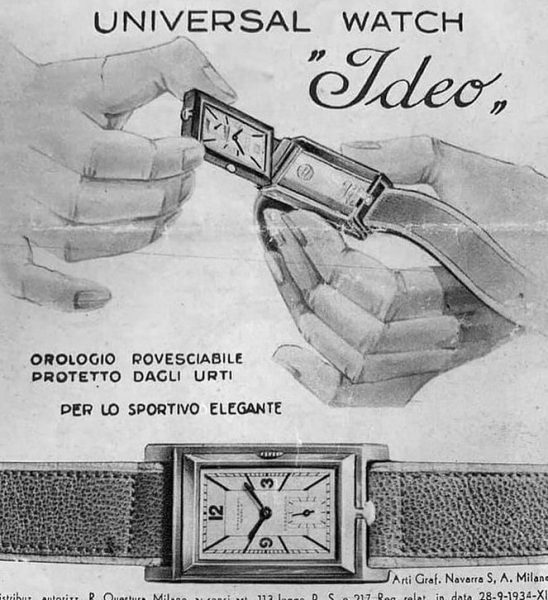
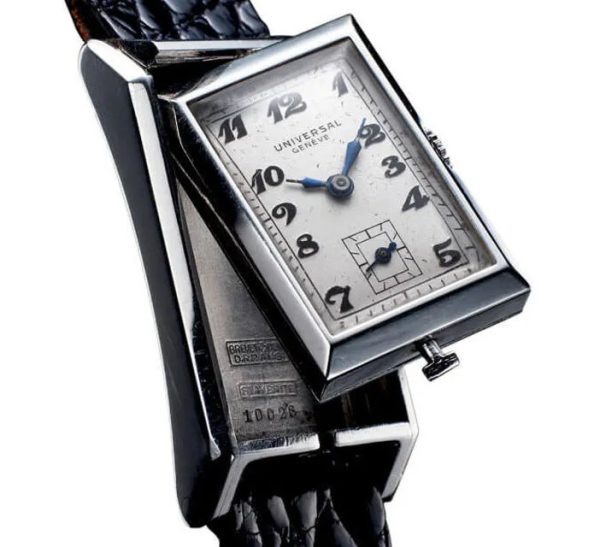
This watch, which Universal called Ideo but sometimes called Cabriolet, is highly original, featuring a two-part case connected by a hinge. The part containing the movement and dial can be turned on itself, exposing the case back and thus protecting the crystal. This is reminiscent of Jaeger-LeCoultre’s famous Reverso, and some authors argue that “in 1928, Universal Genève invented and patented the ‘Cabriolet’, a few years before a certain competitor that I won’t name [12]… »
However, a closer analysis casts doubt on this assertion.
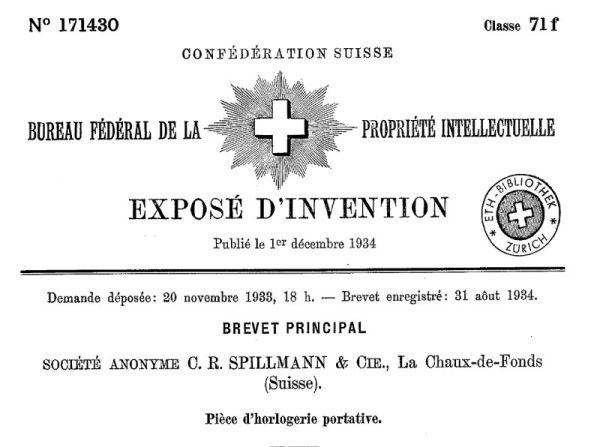
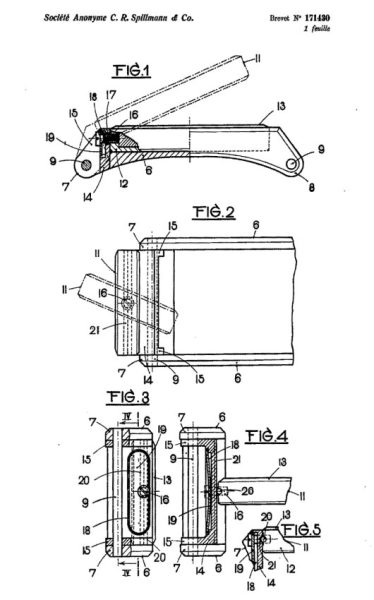
– the case was patented not by Universal but by the famous case manufacturer Spillmann in 1934.
– the case is made of Staybrite steel. Stainless steel was introduced to Swiss watchmaking in 1930. It was manufactured in the UK by the Firth factories in Sheffield[13]. Unless you find an Ideo in another metal, those in stainless steel cannot be dated back to the 1920s.
– The movements are shockproof, and the word “Parashock” is often found on the dial. In fact, this is the name given by some manufacturers to the first anti-shock systems. However, with the exception of Election and Helvétia, the first shock-resistant watches date back to the early 1930s.
– finally, there is no Universal (actually Perret & Berthoud) patent in the 1920s, nor in the 1930s. And the earliest (from 1940) do not concern a reversible case.
This watch therefore dates from the mid-1930s, well after the Reverso was created in France.
6.2 Universal Autorem
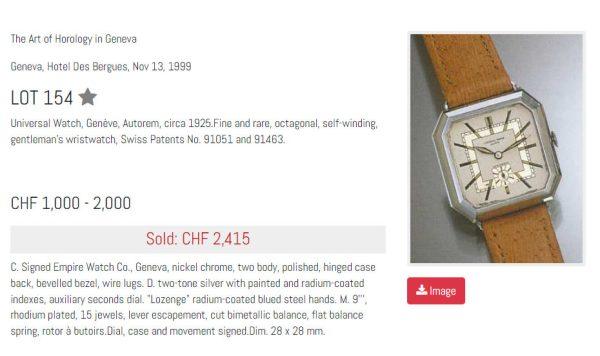
It’s an automatic watch with an attractive square cutaway case, often presented as “patented in 1925 by Universal[14] ».
The source of this claim appears to be an auction catalog from a company that sometimes takes liberties with historical reality[15].
To be clear, the Autorem is an automatic watch caliber, neither from 1925, nor from Universal, which did not register any patents in the 1920s and 1930s. Its history is complex, and the indications engraved on the movement don’t really help, as these are the patent application numbers and not the patent numbers, as can sometimes be mistakenly read.
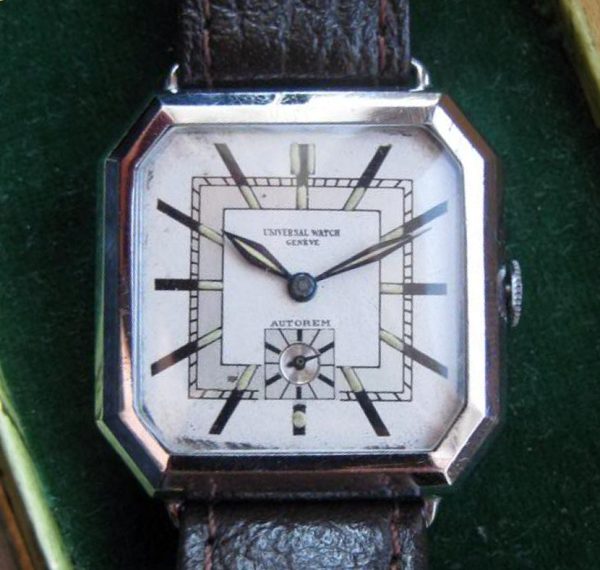
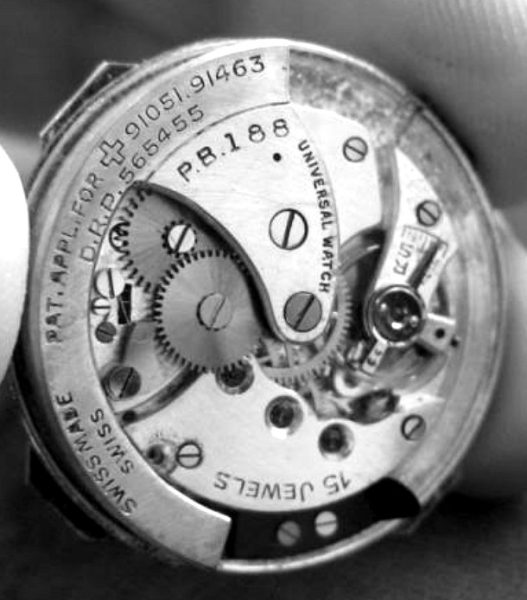
The origin lies in the automatic caliber created in 1930 by Eugène Meylan in La Chaux-de-Fonds[16]. First used by Manufacture Glycine in 1931, Meylan’s patents were taken over in 1933 by Georges Henry, director of Fabrique Ilosa in Geneva. Georges Henry also took over Swiss patents CH 159 711 and 712 from the Invicta company, which were in fact improvements on the Meylan system[17]. In 1933, together with Adolphe Neumann, he set up the Autorem company to market his automatic movements[18]. This is why Autorem watches can be found under various brand names, such as Universal or, above all, Etna Watch, which had its own patent on the movement. In fact, some Universal Autorem watches have cases signed Empire Watch, a brand of Etna Watch.
The Universal Autorem therefore dates from the mid-1930s, and does not have a manufacture movement.
The complex history of the EMSA and Autorem movements is summarized in the following diagram.
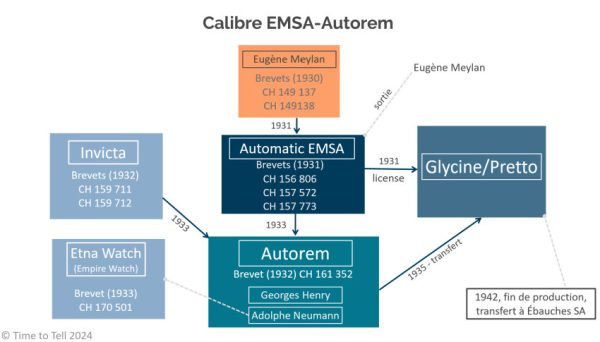
Notes:
About Time To Tell: Time To Tell has one of the largest private digitized databases on the history of Swiss watchmaking, with over 2.3 TB of data on more than 1,000 Swiss watch manufacturers. This database has been built up over a period of some thirty years, and continues to be fed with around 50 to 100 GB of data every year. The database is made up of old documents, mostly Swiss trade magazines, dating from the late 19th to the late 20th century. Most of these documents are not available on the Internet. Historical articles published on time2tell.com always cite the sources used.
Time To Tell is a private company, independent of any watch manufacturer.
Concerning Universal Genève: Most online information about Universal has no credible sources. As a result, false information is repeated from site to site. This is the case, for example, with the release dates of the various Universal chronograph models or the origin of certain watches such as the Autorem. This article on Universal has taken several months to complete and is based solely on reliable historical sources. All sources used are referenced. However, this does not preclude errors or omissions. Any comments are welcome, and readers can contact us at timetotell@orange.fr
©Time To Tell, 2024
Reproduction forbidden without authorization. Any use of this article by an artificial intelligence is strictly forbidden and will be considered as copyright infringement.
[1] Brevet CH 312 551
[2] Journal Suisse d'Horlogerie, 1955, 5-6, p. 223 et suivantes
[3] Les dates fournies pour les lancements des différents modèles sont celles des présentations à la Foire de Bâle, au moment où les modèles sont rendus publics. Universal dans ses publicités présente parfois des dates antérieures correspondant sans doute à des dates où le modèle était en cours de test.
[4] Revue Internationale d'Horlogerie, 1958, 12, p. 23
[5] La Suisse Horlogère, édition hebdomadaire, 1962, 12, p. 254
[6] Journal Suisse d'Horlogerie, 1937, 11-12, p. 44
[7] Journal Suisse d'Horlogerie, 1961, p. 421 et suivantes
[8] La Suisse Horlogère, édition hebdomadaire, 1963, 39, p. 909
[9] Journal Suisse d'Horlogerie, 1970, 5, p. 558-559
[10] La Suisse Horlogère, 1971, 2, p. 103
[11] Revue Internationale d'Horlogerie, 1915, 1, p. 37
[12] https://www.romainrea.com/montres-de-collection/universal-geneve-cabriolet/
[13] Journal Suisse d'Horlogerie, 1934, 9, p. 10 et suivantes
[14] Voir par exemple : https://vintagewatchspecialist.com/collections/universal-geneve-watches-ug/
[16] Brevets CH 149 137 déposé le 15 octobre 1930, et CH 149 138 déposé le 24 octobre de la même année
[17] https://www.e-periodica.ch/digbib/view?pid=sha-001%3A1933%3A51%3A%3A1045&referrer=search#1045
[18] https://www.e-periodica.ch/digbib/view?pid=sha-001%3A1933%3A51%3A%3A835&referrer=search#835
